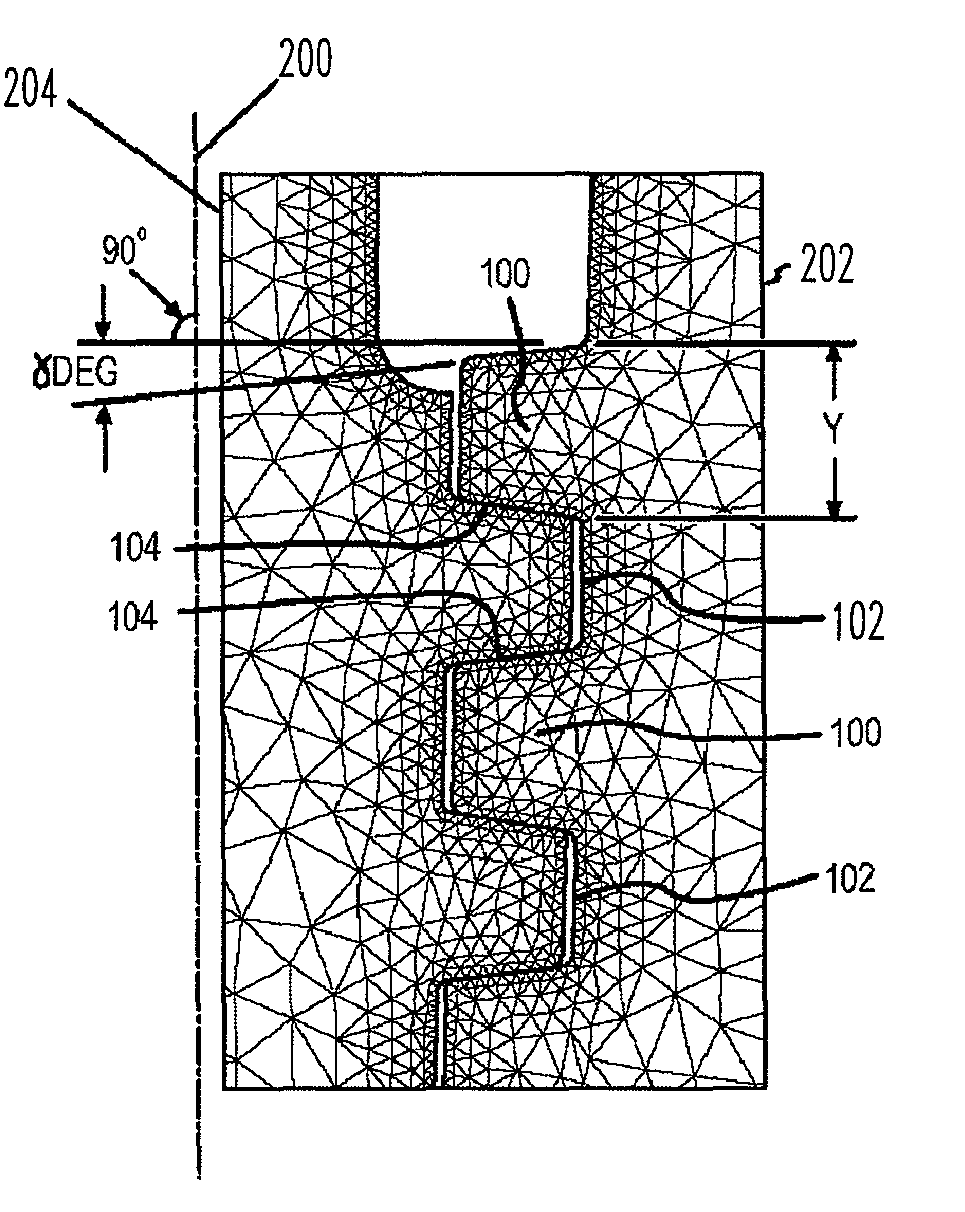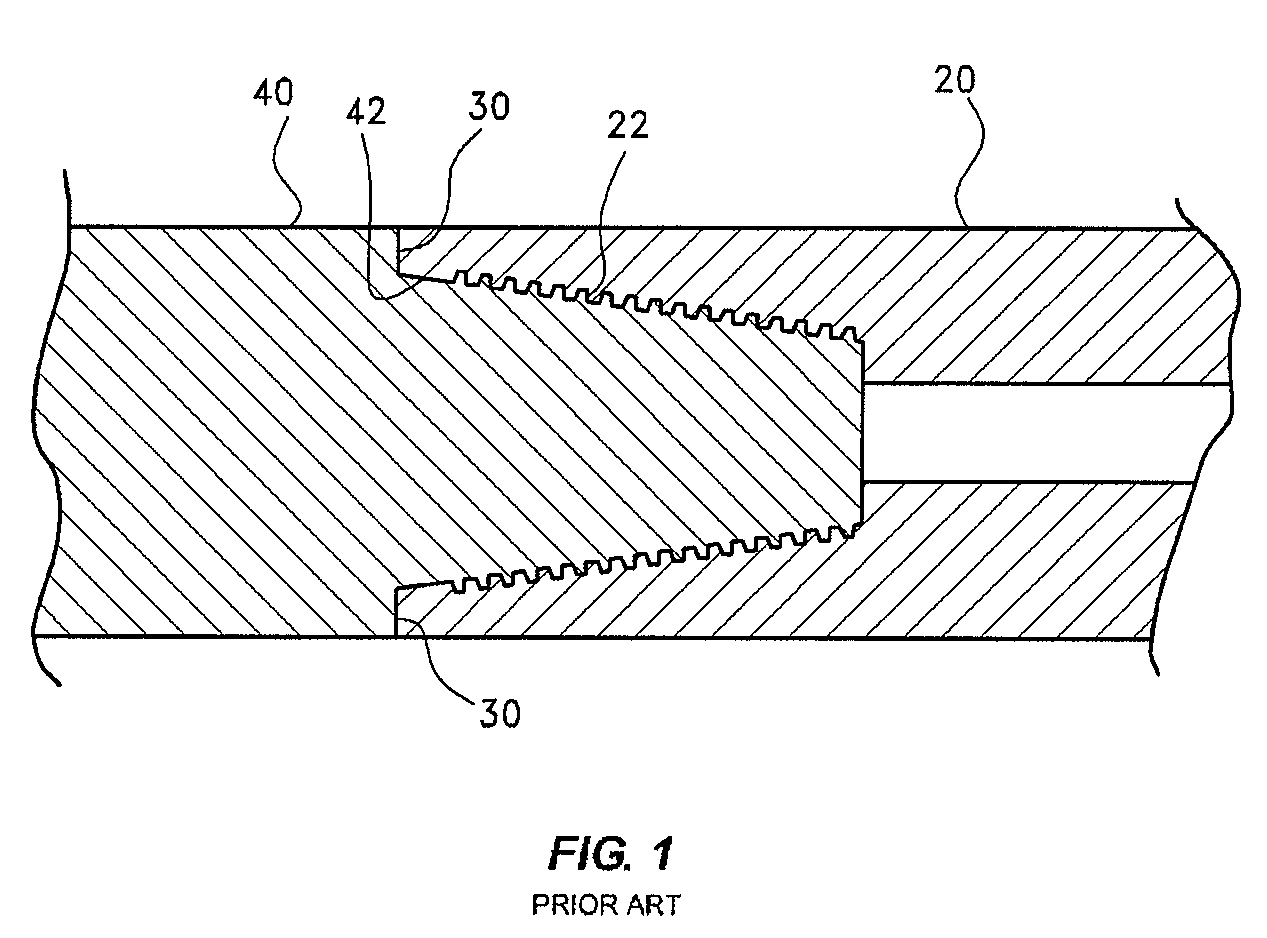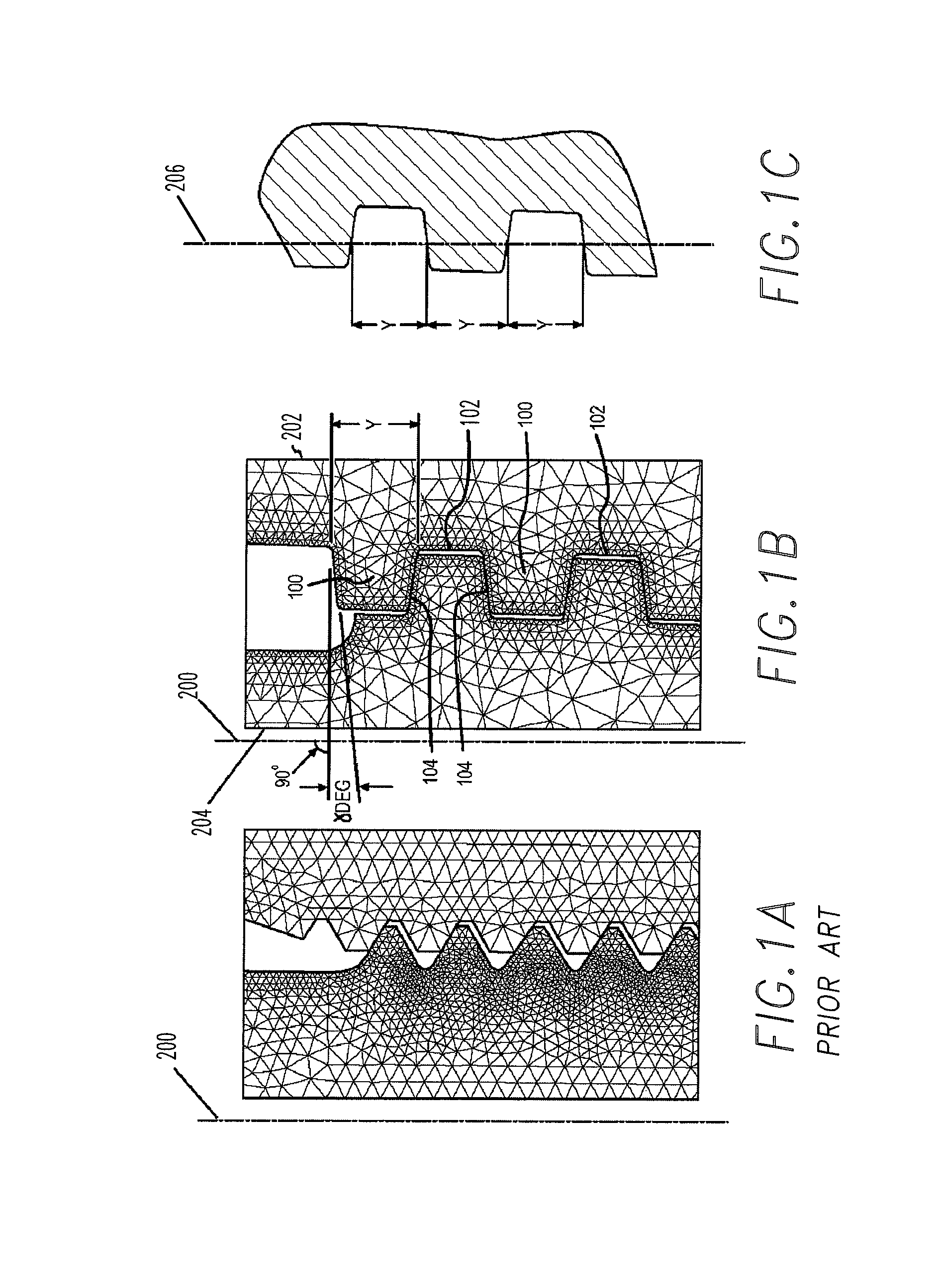Sucker rod connection with improved fatigue resistance, formed by applying diametrical interference to reduce axial interference
a diametrical interference and fatigue resistance technology, applied in the direction of hose connection, screw threaded joint, pipe/joint/fitting, etc., can solve the problems affecting the service life of the pin body, and most failures of the rod in the area. , to achieve the effect of increasing the resistance to failur
- Summary
- Abstract
- Description
- Claims
- Application Information
AI Technical Summary
Benefits of technology
Problems solved by technology
Method used
Image
Examples
case 1
[0055]This design is less desirable in two aspects: structural (plasticized threads) and fatigue (coefficient of predominantly negative values). Coefficient D shows poorer behavior in the areas where the maximum principal stress is higher, and such stress is the consequence of axial interference. Thread plasticizing is the result of diametrical interference and 7° flank angle.
case 2
[0056]Our hypothesis that a decrease in axial interference improves stress distribution and, therefore, fatigue coefficient D, is confirmed. However, there is still the problem of threads plasticizing, or thread strain.
case 3
[0057]Although the results obtained in this case—both structural and fatigue-related—are good, the diametrical interference is considered too low because it is near the manufacturer's tolerance level, which is about 0.05 mm per part. Thus, a diametrical interference of 0.05 mm means, in practice, that the diametrical interference may be as great as 0.10 mm or as little as 0.00 mm.
PUM
 Login to View More
Login to View More Abstract
Description
Claims
Application Information
 Login to View More
Login to View More - R&D
- Intellectual Property
- Life Sciences
- Materials
- Tech Scout
- Unparalleled Data Quality
- Higher Quality Content
- 60% Fewer Hallucinations
Browse by: Latest US Patents, China's latest patents, Technical Efficacy Thesaurus, Application Domain, Technology Topic, Popular Technical Reports.
© 2025 PatSnap. All rights reserved.Legal|Privacy policy|Modern Slavery Act Transparency Statement|Sitemap|About US| Contact US: help@patsnap.com



